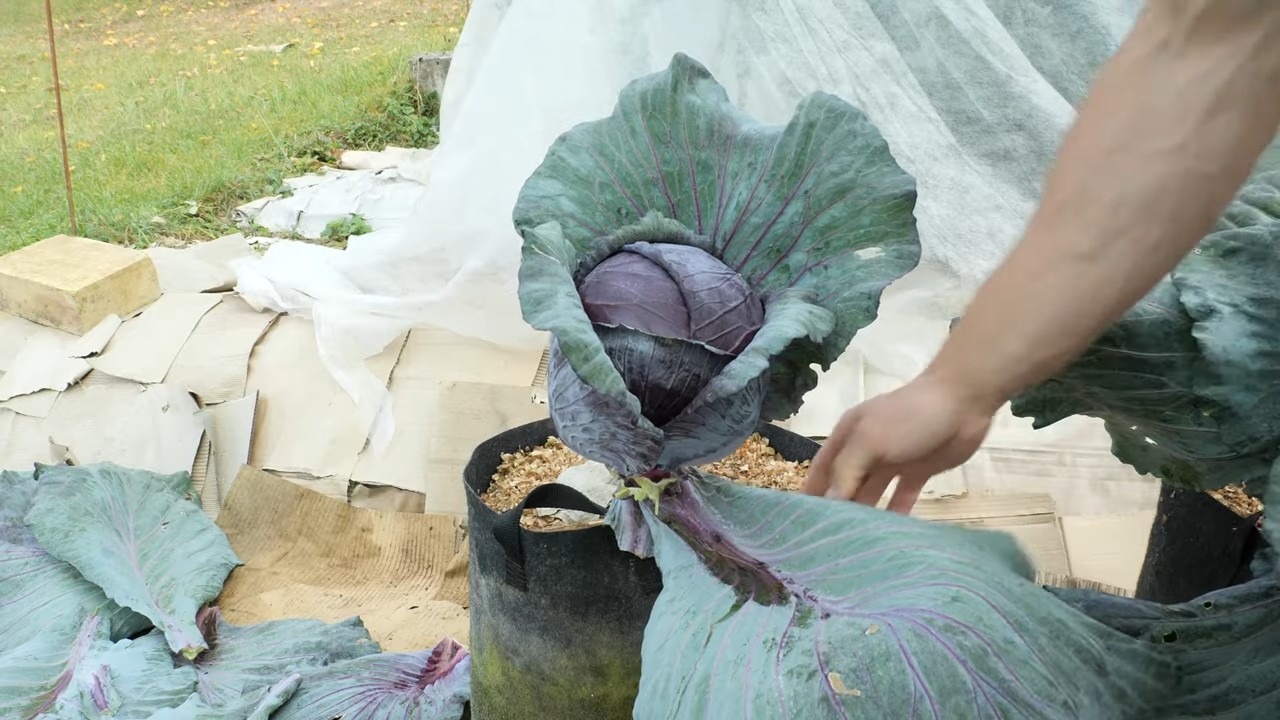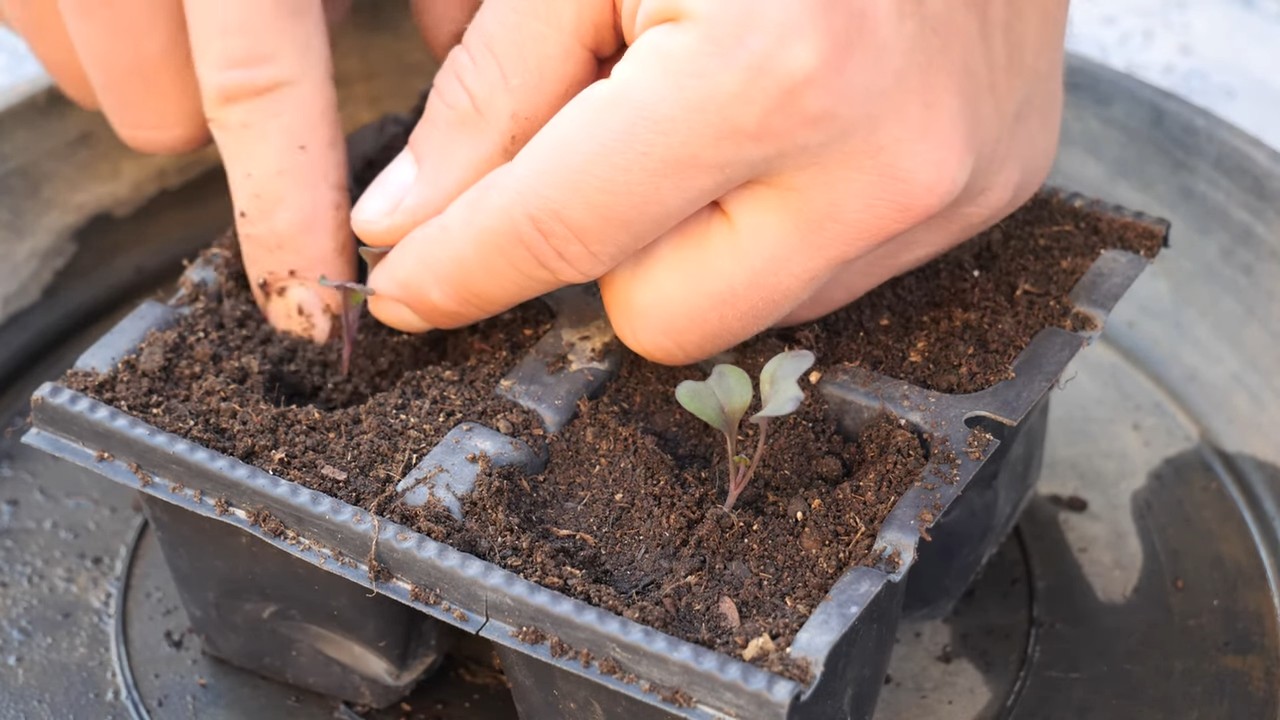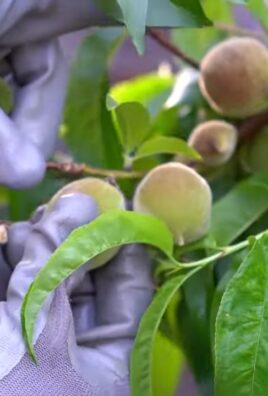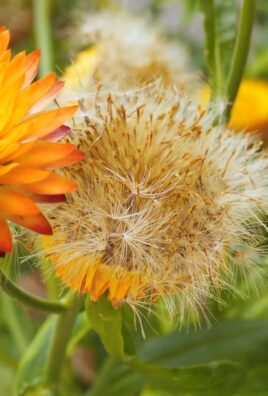Growing red cabbage on a balcony might sound like a challenge, but trust me, it’s totally achievable and incredibly rewarding! Forget those bland supermarket cabbages; imagine harvesting your own vibrant, flavorful red cabbage right outside your door. For centuries, people have cultivated vegetables in small spaces, from ancient rooftop gardens in Babylon to the window boxes of Victorian England. This tradition continues today, fueled by a desire for fresh, healthy food and a connection to nature, even in the heart of the city.
But why should you bother with growing red cabbage on a balcony? Well, for starters, store-bought produce often lacks the freshness and flavor of homegrown vegetables. Plus, you have complete control over what goes into your cabbage, ensuring it’s free from harmful pesticides and chemicals. More importantly, it’s a fantastic way to reduce your carbon footprint and connect with the natural world. I know that space can be a constraint, but with a few clever DIY tricks and hacks, you can transform your balcony into a thriving mini-farm. This article will guide you through everything you need to know, from choosing the right container to protecting your precious cabbage from pests. Get ready to unleash your inner urban gardener!

Growing Red Cabbage on Your Balcony: A Comprehensive Guide
Hey there, fellow balcony gardeners! Ever thought about growing your own vibrant red cabbage right outside your door? It’s totally doable, and I’m here to walk you through the whole process. Not only is it rewarding to harvest your own food, but red cabbage adds a beautiful pop of color to your balcony garden. Let’s get started!
Choosing the Right Variety and Container
Before we dive into the nitty-gritty, let’s talk about variety and container selection. This is crucial for balcony success!
* Variety Selection: Look for compact or dwarf varieties of red cabbage. These are bred to be smaller and more manageable in containers. Some great options include ‘Red Express’, ‘Ruby Ball’, and ‘Integro’. These mature faster and take up less space.
* Container Size: Red cabbage needs room to grow. I recommend a container that’s at least 12 inches deep and 12 inches in diameter. A larger container (15-18 inches) is even better, as it will provide more space for the roots to develop and hold moisture.
* Container Material: Plastic, terracotta, or even fabric grow bags will work. Make sure your chosen container has drainage holes! This is non-negotiable. Soggy soil is a cabbage killer.
* Sunlight: Red cabbage needs at least 6 hours of direct sunlight per day. Choose a sunny spot on your balcony. If your balcony is partially shaded, try to position your container where it gets the most morning sun.
Getting Started: Planting Your Red Cabbage
Okay, now for the fun part – planting! You have two options: starting from seeds or buying seedlings. I personally prefer seedlings because they give you a head start, but I’ll cover both methods.
Starting from Seeds (Optional)
1. Sowing Seeds Indoors (4-6 weeks before the last frost): Fill seed trays or small pots with seed-starting mix. Sow the seeds about ¼ inch deep and gently water them. Keep the soil consistently moist but not soggy.
2. Providing Light: Place the seed trays under grow lights or in a very sunny windowsill. Seedlings need plenty of light to prevent them from becoming leggy.
3. Hardening Off: Once the seedlings have a few sets of true leaves, gradually acclimate them to outdoor conditions. Start by placing them outside for an hour or two each day, increasing the time over a week or so. This helps them adjust to the sun, wind, and temperature changes.
Planting Seedlings (The Easier Route!)
1. Preparing the Container: Fill your chosen container with a high-quality potting mix. Avoid using garden soil, as it can compact in containers and doesn’t drain well. I like to mix in some compost for added nutrients.
2. Creating a Planting Hole: Dig a hole in the center of the container that’s large enough to accommodate the seedling’s root ball.
3. Removing the Seedling: Gently remove the seedling from its nursery pot. If the roots are tightly bound, gently loosen them with your fingers.
4. Planting the Seedling: Place the seedling in the hole and backfill with potting mix. Make sure the top of the root ball is level with the soil surface.
5. Watering Thoroughly: Water the newly planted seedling thoroughly until water drains out of the bottom of the container. This helps settle the soil and encourages root growth.
Caring for Your Red Cabbage
Now that your red cabbage is planted, it’s time to provide it with the care it needs to thrive.
* Watering: Red cabbage needs consistent moisture, especially during hot weather. Water deeply whenever the top inch of soil feels dry to the touch. Avoid overwatering, as this can lead to root rot.
* Fertilizing: Red cabbage is a heavy feeder. Fertilize every 2-3 weeks with a balanced liquid fertilizer. Look for a fertilizer that’s specifically formulated for vegetables. Follow the instructions on the fertilizer label. You can also side-dress with compost every few weeks.
* Sunlight: As mentioned earlier, red cabbage needs at least 6 hours of direct sunlight per day. If your balcony doesn’t get enough sunlight, consider using grow lights.
* Pest Control: Keep an eye out for common cabbage pests like cabbage worms, aphids, and slugs. Handpick any pests you see. You can also use organic pest control methods like insecticidal soap or neem oil.
* Weed Control: Keep the container free of weeds. Weeds compete with your red cabbage for nutrients and water.
* Supporting the Head: As the cabbage head grows larger, it may need some support. You can use a stake or tomato cage to prevent the head from falling over.
Dealing with Common Problems
Even with the best care, you might encounter some problems. Here’s how to troubleshoot:
* Yellowing Leaves: This could be a sign of overwatering, underwatering, or nutrient deficiency. Check the soil moisture and adjust your watering schedule accordingly. Fertilize with a balanced fertilizer.
* Stunted Growth: This could be caused by insufficient sunlight, poor soil, or pests. Make sure your red cabbage is getting enough sunlight. Amend the soil with compost. Check for pests and take appropriate action.
* Cabbage Worms: These pesky caterpillars can quickly devour your cabbage leaves. Handpick them off the plant. You can also use Bacillus thuringiensis (Bt), a biological insecticide that’s safe for humans and pets.
* Aphids: These tiny insects suck the sap from plants, causing them to weaken. Spray aphids with insecticidal soap or neem oil.
* Slugs: Slugs can damage cabbage leaves, especially at night. Handpick slugs off the plant. You can also use slug bait or create a barrier around the plant with copper tape.
Harvesting Your Red Cabbage
The moment you’ve been waiting for! Red cabbage is typically ready to harvest 70-85 days after planting seedlings.
1. Checking for Maturity: The cabbage head should be firm and dense. Gently squeeze the head to check for firmness.
2. Harvesting: Use a sharp knife to cut the cabbage head from the stem. Leave a few outer leaves on the plant, as they can continue to produce smaller heads.
3. Storing: Store harvested red cabbage in the refrigerator for up to two weeks.
Tips for Success
Here are a few extra tips to help you grow the best red cabbage on your balcony:
* Rotate Crops: If you grow red cabbage in the same container year after year, the soil can become depleted of nutrients. Rotate your crops by planting different vegetables in the container each year.
* Companion Planting: Plant companion plants like dill, chamomile, and rosemary near your red cabbage. These plants can help deter pests and attract beneficial insects.
* Mulching: Apply a layer of mulch around the base of the plant to help retain moisture and suppress weeds.
* Record Keeping: Keep a gardening journal to track your progress. Note the planting date, variety, fertilizer schedule, and any problems you encounter. This will help you learn from your mistakes and improve your gardening skills.
* Don’t Give Up! Gardening can be challenging, but it’s also incredibly rewarding. Don’t be discouraged if you encounter problems. Learn from your mistakes and keep trying.
Enjoying Your Homegrown Red Cabbage
Congratulations! You’ve successfully grown red cabbage on your balcony. Now it’s time to enjoy the fruits (or vegetables!) of your labor. Red cabbage is a versatile vegetable that can be used in a variety of dishes.
* Salads: Shredded red cabbage adds a crunchy and colorful element to salads.
* Slaws: Red cabbage is a key ingredient in many slaws.
* Pickles: Pickled red cabbage is a tangy and delicious condiment.
* Stews: Red cabbage can be added to stews for added flavor and nutrients.
* Roasted: Roasted red cabbage is a simple and flavorful side dish.
* Juicing: Red cabbage juice is packed with vitamins and antioxidants.
I hope this guide has inspired you to grow your own red cabbage on your balcony. It’s a fun and rewarding experience that will add beauty and flavor to your life. Happy gardening!

Conclusion
So, there you have it! Growing red cabbage on your balcony isn’t just a quirky gardening experiment; it’s a surprisingly rewarding and accessible way to bring fresh, vibrant produce right to your doorstep. We’ve walked you through the process, from selecting the right container and soil to nurturing your seedlings and protecting them from pests. But why should you actually take the plunge and dedicate some precious balcony space to this beautiful vegetable?
First and foremost, the taste of homegrown red cabbage is simply unmatched. The crispness, the subtle sweetness, and the vibrant color are all amplified when you’ve nurtured it yourself. Forget the bland, mass-produced heads at the supermarket; this is red cabbage at its finest. Plus, you know exactly what’s gone into growing it – no pesticides, no hidden chemicals, just pure, natural goodness.
Beyond the taste, growing red cabbage on your balcony offers a unique aesthetic appeal. The deep purple leaves are stunningly beautiful, adding a touch of drama and visual interest to your outdoor space. Imagine the compliments you’ll receive from guests as they admire your thriving balcony garden! It’s not just about food; it’s about creating a beautiful and functional living space.
And let’s not forget the satisfaction of growing your own food. There’s something incredibly empowering about nurturing a plant from seed to harvest. It connects you to nature, teaches you patience, and provides a sense of accomplishment that’s hard to find elsewhere. Even if you’re a complete beginner, growing red cabbage on your balcony is a manageable and rewarding project.
But the benefits don’t stop there. Growing your own red cabbage is also a sustainable choice. You’re reducing your carbon footprint by eliminating the need for transportation and packaging. You’re also supporting a more localized food system, which is better for the environment and your community.
Ready to take your balcony garden to the next level? Consider these variations to personalize your red cabbage growing experience:
* **Companion Planting:** Plant herbs like rosemary or thyme alongside your red cabbage to deter pests and enhance flavor. Marigolds are also excellent companions, adding a splash of color and repelling unwanted insects.
* **Container Gardening Combinations:** Combine your red cabbage with other balcony-friendly vegetables like lettuce, spinach, or radishes for a diverse and productive garden.
* **Heirloom Varieties:** Explore different varieties of red cabbage, such as ‘Red Drumhead’ or ‘Ruby Perfection,’ to discover unique flavors and colors.
* **Succession Planting:** Plant new seedlings every few weeks to ensure a continuous harvest throughout the growing season.
Ultimately, growing red cabbage on your balcony is a fantastic way to enjoy fresh, delicious produce, beautify your living space, and connect with nature. It’s a project that’s both rewarding and sustainable, and it’s something that anyone can do, regardless of their gardening experience.
So, what are you waiting for? Grab some seeds, find a sunny spot on your balcony, and get ready to grow your own delicious red cabbage. We’re confident that you’ll be amazed by the results. And once you’ve harvested your first head, be sure to share your experience with us! We’d love to see your balcony gardens and hear about your tips and tricks for growing the perfect red cabbage. Share your photos and stories on social media using #BalconyRedCabbage and let’s inspire others to join the fun! Let’s all embrace the joy of growing our own food, one red cabbage at a time.
Frequently Asked Questions (FAQ)
1. What is the best time of year to start growing red cabbage on my balcony?
The best time to start growing red cabbage depends on your climate. In general, you can start seeds indoors 6-8 weeks before the last expected frost in spring for a summer harvest, or start seeds in mid-summer for a fall/winter harvest. Red cabbage prefers cooler temperatures, so avoid planting during the hottest months of the year. Check your local gardening calendar for specific planting dates in your area.
2. What kind of container is best for growing red cabbage on a balcony?
Choose a container that is at least 12 inches deep and 12 inches in diameter. Red cabbage needs plenty of room for its roots to grow. A larger container is always better, as it will provide more space for the plant to thrive and retain moisture more effectively. Make sure the container has drainage holes to prevent waterlogging. Terracotta pots, plastic containers, or even repurposed buckets can work well, as long as they meet these requirements.
3. What type of soil should I use for growing red cabbage in a container?
Use a well-draining potting mix that is rich in organic matter. Avoid using garden soil, as it can become compacted in containers and hinder drainage. A good potting mix will provide the necessary nutrients and aeration for healthy root growth. You can also amend the potting mix with compost or aged manure to further enrich it.
4. How much sunlight does red cabbage need when grown on a balcony?
Red cabbage needs at least 6 hours of direct sunlight per day. Choose a sunny spot on your balcony that receives ample sunlight throughout the day. If your balcony is shaded for part of the day, try to position the container where it will receive the most sunlight possible. Insufficient sunlight can result in leggy growth and smaller heads.
5. How often should I water my red cabbage plants?
Water your red cabbage plants regularly, especially during hot and dry weather. The soil should be kept consistently moist, but not waterlogged. Check the soil moisture by sticking your finger into the soil; if it feels dry an inch or two below the surface, it’s time to water. Water deeply, allowing the water to drain out of the drainage holes. Avoid overhead watering, as this can promote fungal diseases.
6. What are some common pests and diseases that affect red cabbage, and how can I prevent them?
Common pests that affect red cabbage include cabbage worms, aphids, and flea beetles. To prevent these pests, you can use row covers to protect your plants, handpick pests off the plants, or use organic insecticides such as neem oil or insecticidal soap. Common diseases include clubroot and black rot. To prevent these diseases, choose disease-resistant varieties, practice crop rotation, and ensure good drainage.
7. How do I know when my red cabbage is ready to harvest?
Red cabbage is ready to harvest when the head is firm and dense. The size of the head will vary depending on the variety, but generally, it should be about 6-8 inches in diameter. To harvest, use a sharp knife to cut the head from the stem, leaving a few outer leaves intact.
8. Can I grow red cabbage indoors if I don’t have a balcony?
While it’s possible to grow red cabbage indoors, it can be challenging. Red cabbage needs a lot of sunlight, which can be difficult to provide indoors. You would need to use grow lights to supplement natural sunlight. Additionally, indoor growing conditions can be more susceptible to pests and diseases. Growing red cabbage on a balcony is generally easier and more successful.
9. How can I store my harvested red cabbage?
Store your harvested red cabbage in a cool, dry place, such as a refrigerator. Wrap the head in plastic wrap or store it in a plastic bag to prevent it from drying out. Red cabbage can be stored for several weeks in the refrigerator.
10. Can I grow red cabbage from seed or should I buy seedlings?
You can grow red cabbage from either seed or seedlings. Starting from seed allows you to choose from a wider variety of cultivars and is generally more economical. However, it requires more time and effort. Buying seedlings is a quicker and easier option, but you may have fewer choices in terms of variety. Both methods can be successful, so choose the option that best suits your needs and preferences.





Leave a Comment